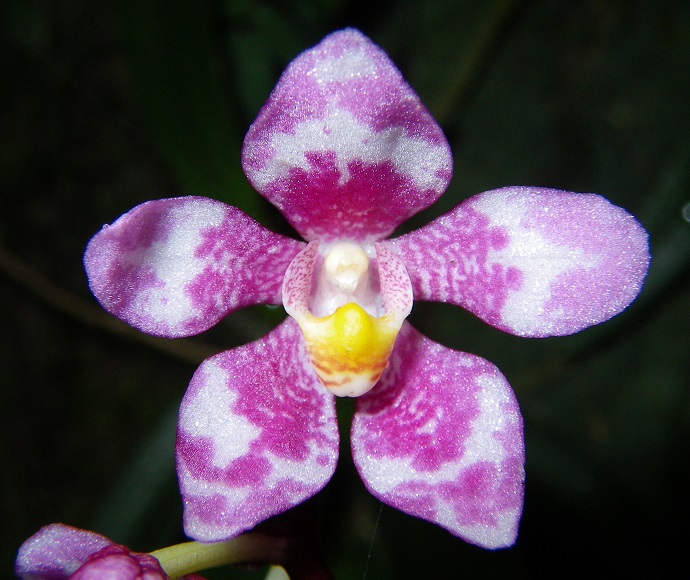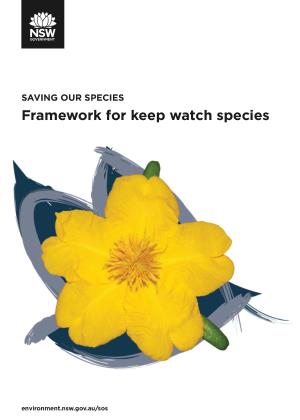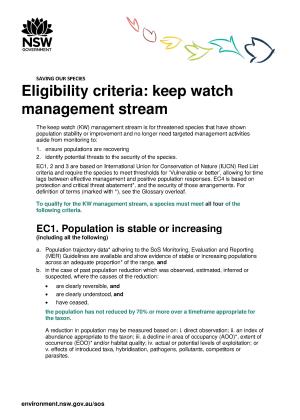 The Saving our Species program keeps an eye on keep watch species because they:
The Saving our Species program keeps an eye on keep watch species because they:
- are naturally rare and have few threats, or
- are more common than once thought.
The Framework for keep watch species (PDF 3.4MB) sets out the keep watch objective and how species are allocated as keep watch.
To be eligible for keep watch, a species must meet all four of the eligibility criteria (PDF 307KB):
- The population is stable or increasing.
- The population is not too small.
- Distribution is not significantly restricted, fragmented or unstable.
- An adequate proportion of the species population occurs within secure conservation land tenure where critical threats are abated or managed.
Unless threats increase or there is evidence that populations are declining, we consider this group a low priority for project investment.
Any new evidence about keep watch species, such as decreases in their population size or increases in significant threats, can be reviewed and assessed against the eligibility criteria. If the criteria are not met, a species can then be moved to another Saving our Species management stream.




